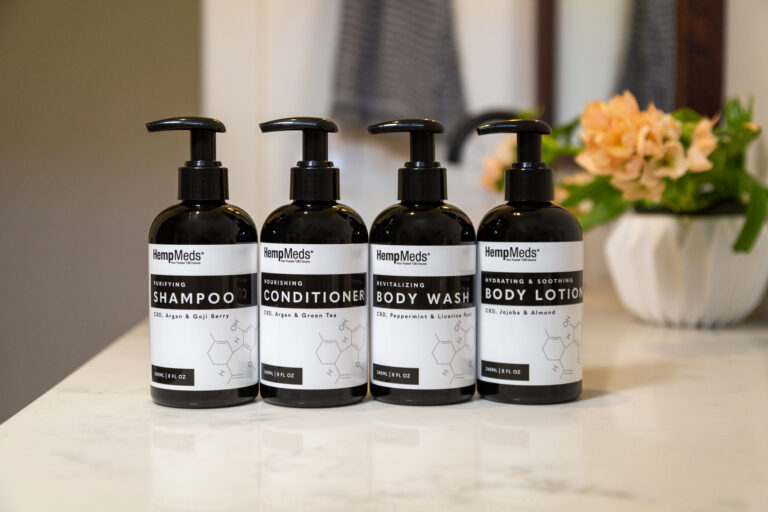Will craft cannabis be the new craft beer?
It is not controversial to say that craft beer has transformed the beer industry, taking market share from big players such as Molson as consumers’ tastes have embraced smaller breweries.
Could the same shakeup happen within the cannabis industry with craft cannabis?
Craft cannabis is grown in smaller batches and some argue is higher quality than big license producers’ (LPs) cannabis.
However, for craft cannabis to disrupt the legal market, growers who have thrived in the grey market would have to go legal and accept some restrictions that come along with it.
Cannabis business accelerator Grow Tech Labs recently predicted that if just 15 percent of British Columbia’s 6,000 grey market craft cannabis growers got licenses and entered the legal market, they could generate nearly $3 billion in cannabis sales over two years.
Greencamp went deep on craft cannabis and talked to a few industry professionals to see if craft cannabis really can become the new craft beer.
What is craft cannabis?
Craft cannabis is smaller batch cannabis grown by smaller farms, but in simpler terms it is largely made up of the legacy market before legalization. This includes legendary cannabis strains such as B.C. bud, the colloquial name for cannabis grown in British Columbia that many knew as the good stuff before legalization.
Farmers can now get a micro-cultivation license from Health Canada that allows them to grow up to 2,150 square feet of cannabis, compared to the hundreds of thousands of square feet big LPs often have to grow their crops.
This limit in how much can be grown allows craft growers to give their product more love and care, which some say makes all the difference.
According to Lisa Campbell, who works for Lifford Wine & Spirits and helps craft cannabis producers find fair prices for their products, one of the biggest differences between craft cannabis and industrial cannabis is that it is hand trimmed versus machine trimmed.
Campbell explained that cannabis has trichomes — little crystals that look like tiny mushrooms with bulbous heads under a microscope. They cover the plant and produce its terpenes and cannabinoids, which contribute to cannabis’ flavour and effects.
Campbell says that big LP cannabis is stored in warehouses for a long time and becomes very dry, and when it is machine trimmed, the heads of the trichomes fall off.
“Almost every LP’s product that I look at through a microscope, all the trichome heads are bounced off,” she said. “That is definitely going to reduce the strength of your cannabis, if you knock off the trichome heads.”
Overall, Campbell says that because big LPs are publicly traded companies, they are mostly concerned about meeting volume commitments to provinces and keeping costs low, and that hurts quality in the long run.
“You can’t test every single package to make sure the consumer will be happy and getting quality products,” she said.
On the other hand, craft cannabis is often hand trimmed, which gives it more dense crystals and better aroma, Campbell says.
Patrick Brauckmann, executive chairman of craft cannabis collective Pasha Brands, goes even further than Campbell on craft cannabis’ advantages.
He says that craft cannabis has a different chemical profile than industrial cannabis, even if the genetics are the same. This means the cannabis’ levels of terpenes and cannabinoids are different, which affects its high as the chemicals play off the THC, the main psychoactive ingredient in cannabis, in what is known as the “entourage effect.”
Brauckmann says that craft cannabis’ different chemical profile is due to how it is cultivated — its food, light, air, and the farmer’s intentions.
“In many cases, [the farmers] are very artistic in the way they approach their business,” he said. “They want to get it right, they’re less concerned with economics than just growing something fabulous and they enjoy smoking.”
Micro-cultivator licenses a ‘challenge’
In order for craft cannabis to legitimately give big LPs a run for their money in Canada, farmers have to be tempted to switch from the grey market to the legal market.
However, this is proving to be a challenge for a number of reasons.
Campbell says a lot of farmers are hesitant to apply for a micro-cultivation license because they’re worried about high taxation, or they won’t get the prices they’d like for their buds.
“It costs a lot of money to apply, so if you’re going to apply you want to make sure your products fetch a good price,” she said.
It costs $2,500 for a micro-cultivation license from Health Canada, which allows producers to grow up to 2,150 square feet of cannabis either indoors or outdoors, and another $2,500 for a micro-processing license, which allows the flower to be packaged and processed. A micro-processing license allows 600 kg of dried flower to be processed a year.
Campbell says the size restriction of micro-cultivation licenses makes meeting consumers’ demands a challenge — even big LPs are having trouble satiating entire provinces.
Health Canada’s strict and lengthy licensing process also is a hurdle for craft cannabis producers, according to Brauckmann.
Applications can be up to 225 pages, and Brauckmann says getting a security clearance alone can take up to a year.
Some farmers not adept at bureaucracy might need to hire consultants, which can add to their costs, and now applicants have to prove they have a facility built before they can apply due to a change of policy from Health Canada, which means making a huge investment with no guarantee of a license.
Campbell says there are currently around 200 micro-cultivator applicants in the queue, but only two or three actual licenses have been given so far.
Could craft cannabis be the new craft beer?
It is still early in the game to really tell what impact craft cannabis will have on the market, but Campbell thinks it could definitely pose a serious threat to big LPs’ market share.
She likens craft cannabis to a group of small fish that take down the bigger fish piecemeal, and says big LPs are already reacting to the coming “craft revolution” by getting in on it themselves.
“Of course LPs are scared of the coming craft revolution and are trying to work with the smaller companies to capture market share by working with them,” Campbell said. “They know if they don’t work with it, it will consume their market share.”
Craft brands such as Broken Coast and Whistler have already been bought by bigger LPs Aphria and Aurora, respectively.
Big LPs also might start developing their own craft lines in-house, according to cannabis LP Aleafia’s Chief Medical Officer, Dr. Michael Verbora.
Verbora says Aleafia is already developing smaller growing spaces that could give it the ability to enter the craft market.
Although craft cannabis has a lot going for it, it does face some hurdles to gaining market share.
Verbora says that many consumers are price sensitive and tend towards higher THC products, not taking into consideration other cannabis components, such as terpenes.
At up to $22 a gram for some craft strains, such as ones from Whistler in the Ontario Cannabis Store (OCS), craft cannabis could be a tough sell to some consumers.
That higher price point could also limit craft cannabis in other product categories, such as concentrates and edibles that will be legal in Canada by the end of the year.
They are expected to be huge business, but Verbora questions whether consumers would pay extra for “craft oil” that might be made from higher quality cannabis and be more balanced than THC-heavy standard concentrates and edibles, such as by having higher terpene levels.
“The vast majority of patients are still going to use oils that are cost effective,” he said. “If patients are paying out of pocket, they will gravitate to the lower cost one typically because the issues they are dealing with.”
However, Bauckmann thinks consumers will want to go for a more balanced high compared to the knockout punch some edibles can provide.
“I fully expect oil products will be phenomenal going forward in the craft world,” he said.
In the end, Verbora thinks craft cannabis’ success really depends on marketing, similar to how craft beer got its footing with eye catching labels and brewery tours and tastings, but right now marketing restrictions are extremely tight in Canada.
Campbell, though, envisions craft cannabis could one day follow craft beer’s footsteps and offer its own “farm gate sales,” where people could tour from farm-to-farm and taste what’s on offer.
“If you had a micro-processing license and had a property, to allow people to buy on site and have farm gate sales would actually create a whole new tourism industry in Canada,” she said.
While such tours are currently illegal in Canada, Campbell says that it is “written in the legislation” in Ontario that producers will have the ability to have farm gate sales.
The Wrap
It is still very early in the game to tell whether craft cannabis will really hit it off with consumers, but with more opportunities to experience it themselves in legal dispensaries — and potentially one day consumption lounges — their tastes could change and mature. Given “craft cannabis” is what many consumed pre-legalization, the demand could be high for products to return to those glory days — the question is whether craft producers can deliver in the legal market.
- Read more about Will craft cannabis be the new craft beer?
- Log in to post comments



